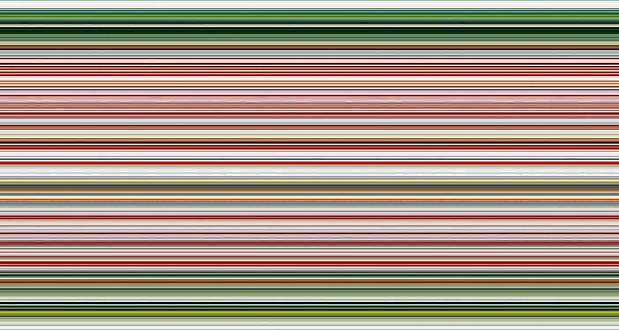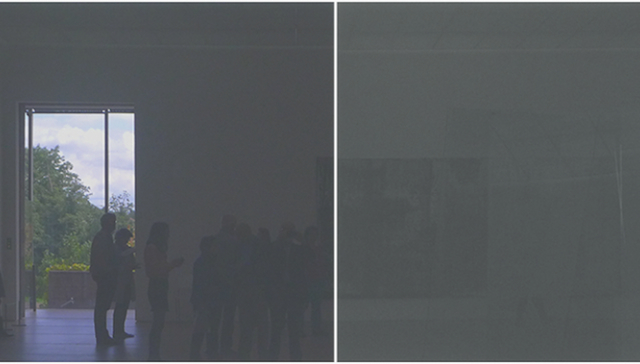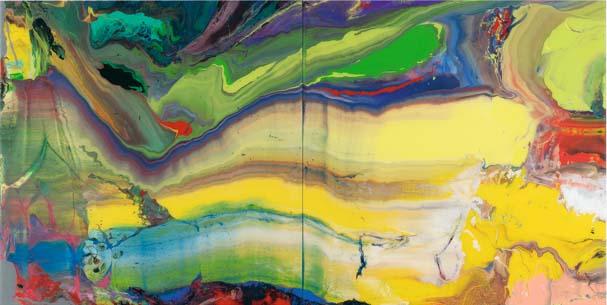Another October and another Frieze week just passed. This means the biggest of big hitters have been turning up in London. The economic quantifiers aren’t precise, but there have been plenty of estimates. Hordes of well-heeled visitors mean big profits for hotels, restaurants, shops and transport. All the people employed to literally make the fair, and the huge cluster of shows, events and happenings which take place because of Frieze, from auctions to ancillary fairs, mean conservative estimates are now hovering around £50m+ for the London economy. And no, that’s not for art sales but all the hubbub surrounding that catalyst that has made London the centre of the contemporary art world, and by extension, the art world as a whole.
However cynical some may be – it was after all probably the biggest commercial week for art anywhere – there are real benefits well beyond the economic for art and its viewers. It’s hardly an accident that the biggest of international contemporary galleries have found premises in London since Frieze started in 2002. And more are being added: the Marian Goodman Gallery, the most perspicacious, elegant and original of art shops, has now opened its doors in spectacular fashion.
Richter can both slap you in the face, and beguile you with beauty
Marian Goodman, now a mere 86, is audaciously inaugurated with a bang up-to-date show of one of the most critically and commercially successful artists now extant, the octogenarian Gerhard Richter, whom she has been showing for 30 years. Mrs Goodman, with eponymous galleries in New York and Paris, and officially listing 41 artists she deals with, from Christian Boltanski to William Kentridge, Steve McQueen to Jeff Wall, is now at home in a converted Victorian textile factory, listed Grade II, designed by David Adjaye (deservedly the with-it architect of culture).
And unlike some of the other newly converted galleries and private museums, Goodman is bang in the centre of town, just off Piccadilly Circus. The building provides two floors of spacious galleries, the first floor toplit. The exhibition spaces do achieve that ineffable combination of being both accessible, not too intimidating, and clear – you know where you are – and impressive; spaces that are subliminally, acutely right in some mysterious way.
Richter is an artist who is at times maddeningly opaque. Simultaneously he can provide radiant and memorable imagery that is readily accessible, and he can do these things at the same time.
For the opening show several aspects of Richter’s alchemy are on view. Recent works are made up of hundreds of narrow horizontal stripes of colours that can almost make you dizzy – like Bridget Riley on speed (pictured below: 920-4 Stripe). They are part of a predetermined set of procedures: an elaborate dependence on a painting of 1990, photographed, divided into grids of some 4,000 fragments, digitally processed, and in Richter’s phrase, then “dividing, mirroring, repeating”.
 The results are digitally printed on paper, and shown under Perspex, all of a piece. It’s a combination of technological mechanics, intuition and choice; conceptual art subjected to the rigour of the artist’s eye. Each individual work is called Strip, and numbered. Each is totally different in effect, one from the other. The colours oscillate; the results are both mesmerising and disarmingly beautiful. Are they paintings, drawings, or, works of art in a mechanical age – reproductions? They are something of all of these.
The results are digitally printed on paper, and shown under Perspex, all of a piece. It’s a combination of technological mechanics, intuition and choice; conceptual art subjected to the rigour of the artist’s eye. Each individual work is called Strip, and numbered. Each is totally different in effect, one from the other. The colours oscillate; the results are both mesmerising and disarmingly beautiful. Are they paintings, drawings, or, works of art in a mechanical age – reproductions? They are something of all of these.
Another sequence are the Flow paintings (see main picture), liquid enamel in brilliant colours held in stasis, arrested, paused and fixed onto glass at a point determined by the painter, and then mounted onto aluminium panels. There are also a series of paintings in enamel which are in a variety of greys, dark, shadowy and suggestive, simply titled Gray behind Glass (pictured below). The glass means that you see your own reflection, becoming tantalisingly part of the work. There is a sculpture, too, 7 Scheiben (Kartenhaus), a house of glass slabs leaning against one another, both tipsy and controlled, like a transparent Richard Serra, except you can only look not walk through.
 There are paintings consisting just of squares of colour, simply called 25 Colours. And there is even a series of jeux d’esprit, a series done in the spring of 2009, of exquisite high-definition photographs of what look to be German landscapes: roads, woods, forests, fields, vistas, hills, each sporting a vivid slash of thick oil paint in variegated colours, both obscuring and enhancing the photographic image. The crude fierceness of the oil paint, its peculiar lack of refinement, means somehow that the delicacy of the photographic detail – light on leaves – is thrown into sharp relief.
There are paintings consisting just of squares of colour, simply called 25 Colours. And there is even a series of jeux d’esprit, a series done in the spring of 2009, of exquisite high-definition photographs of what look to be German landscapes: roads, woods, forests, fields, vistas, hills, each sporting a vivid slash of thick oil paint in variegated colours, both obscuring and enhancing the photographic image. The crude fierceness of the oil paint, its peculiar lack of refinement, means somehow that the delicacy of the photographic detail – light on leaves – is thrown into sharp relief.
Richter can both slap you in the face and beguile you with beauty; he is the master of the use of photography, and the exemplar of the hand done. This mass of contradictions fused into his own recognisable idiom is brilliantly displayed in the new galleries, under the unrelenting fluorescent light that the artist demands.









![SEX MONEY RACE RELIGION [2016] by Gilbert and George. Installation shot of Gilbert & George 21ST CENTURY PICTURES Hayward Gallery](/sites/default/files/styles/thumbnail_125_x_125_/public/mastimages/Gilbert%20%26%20George_%2021ST%20CENTURY%20PICTURES.%20SEX%20MONEY%20RACE%20RELIGION%20%5B2016%5D.%20Photo_%20Mark%20Blower.%20Courtesy%20of%20the%20Gilbert%20%26%20George%20and%20the%20Hayward%20Gallery._0.jpg?itok=3oW-Y84i)





Add comment